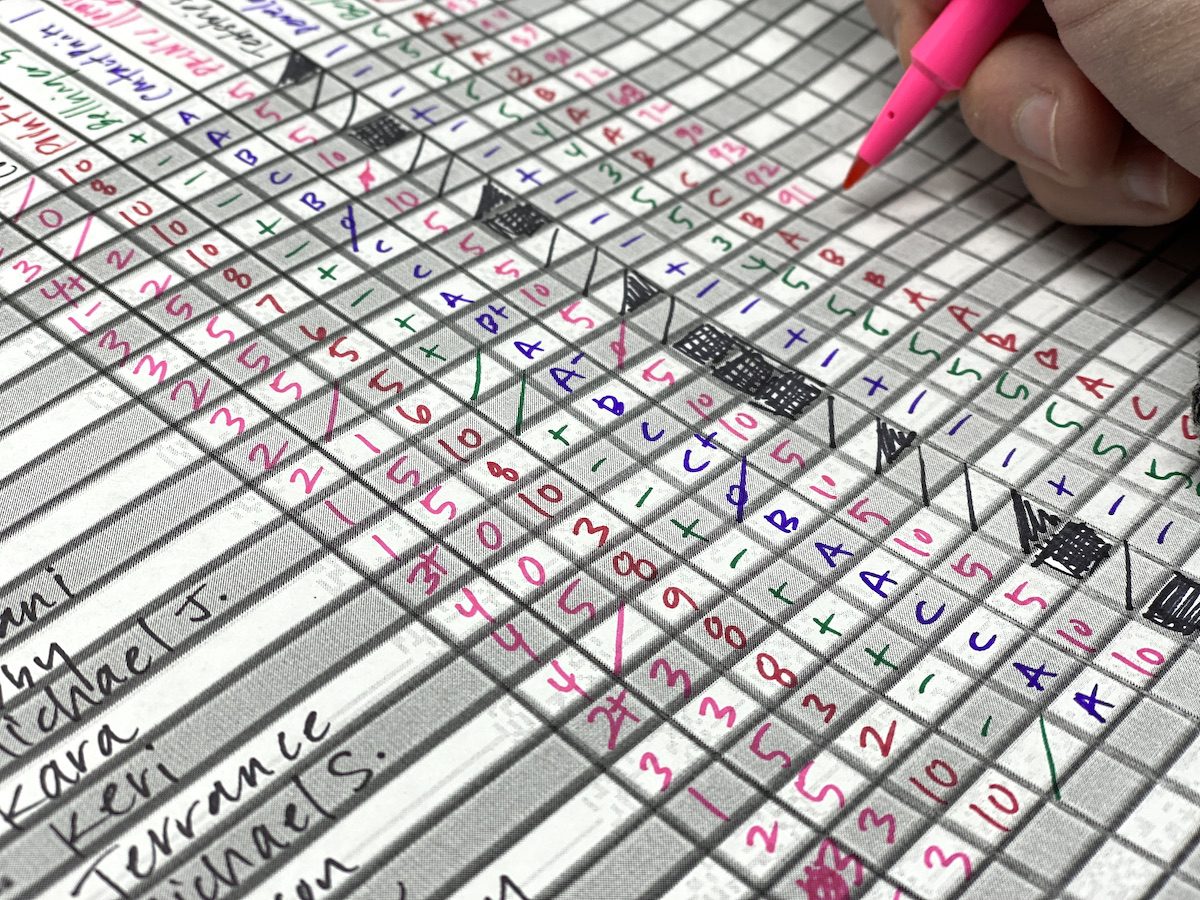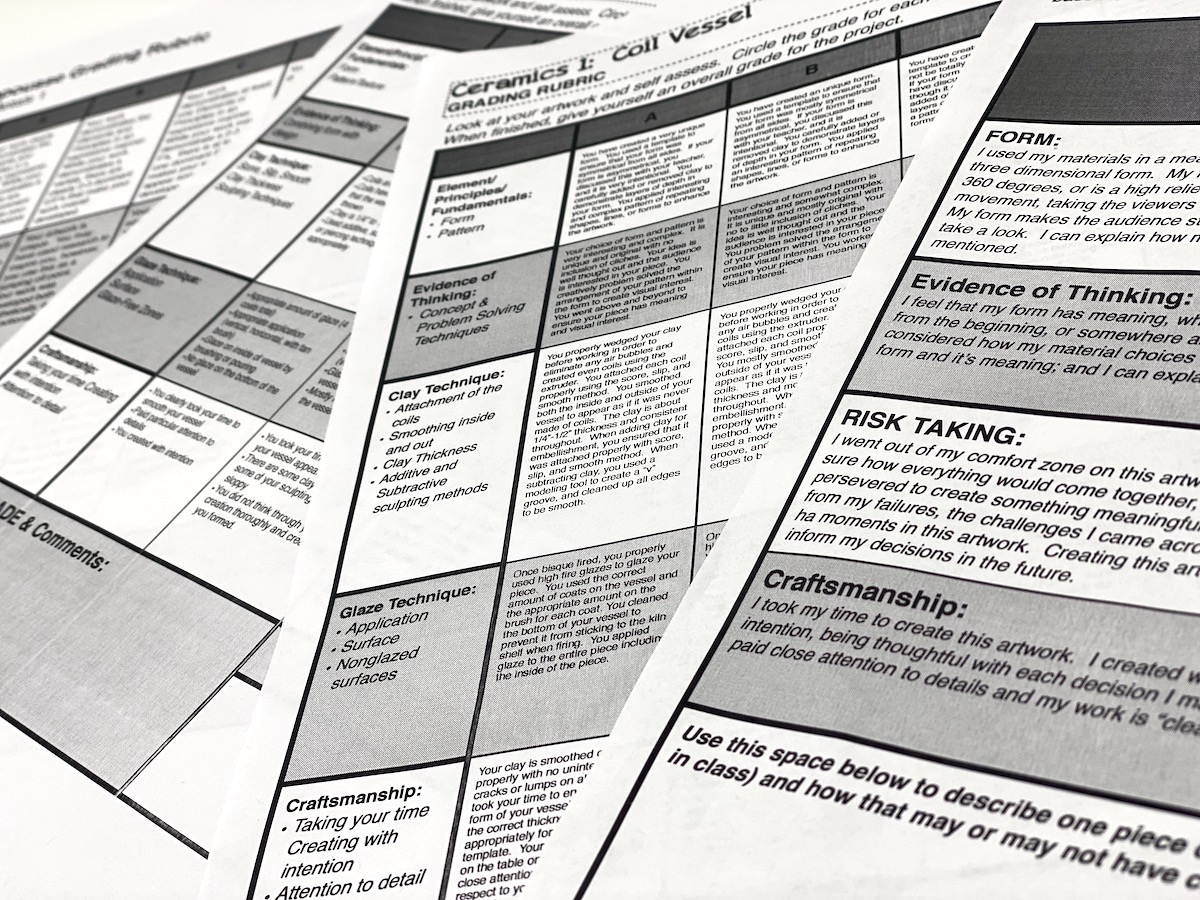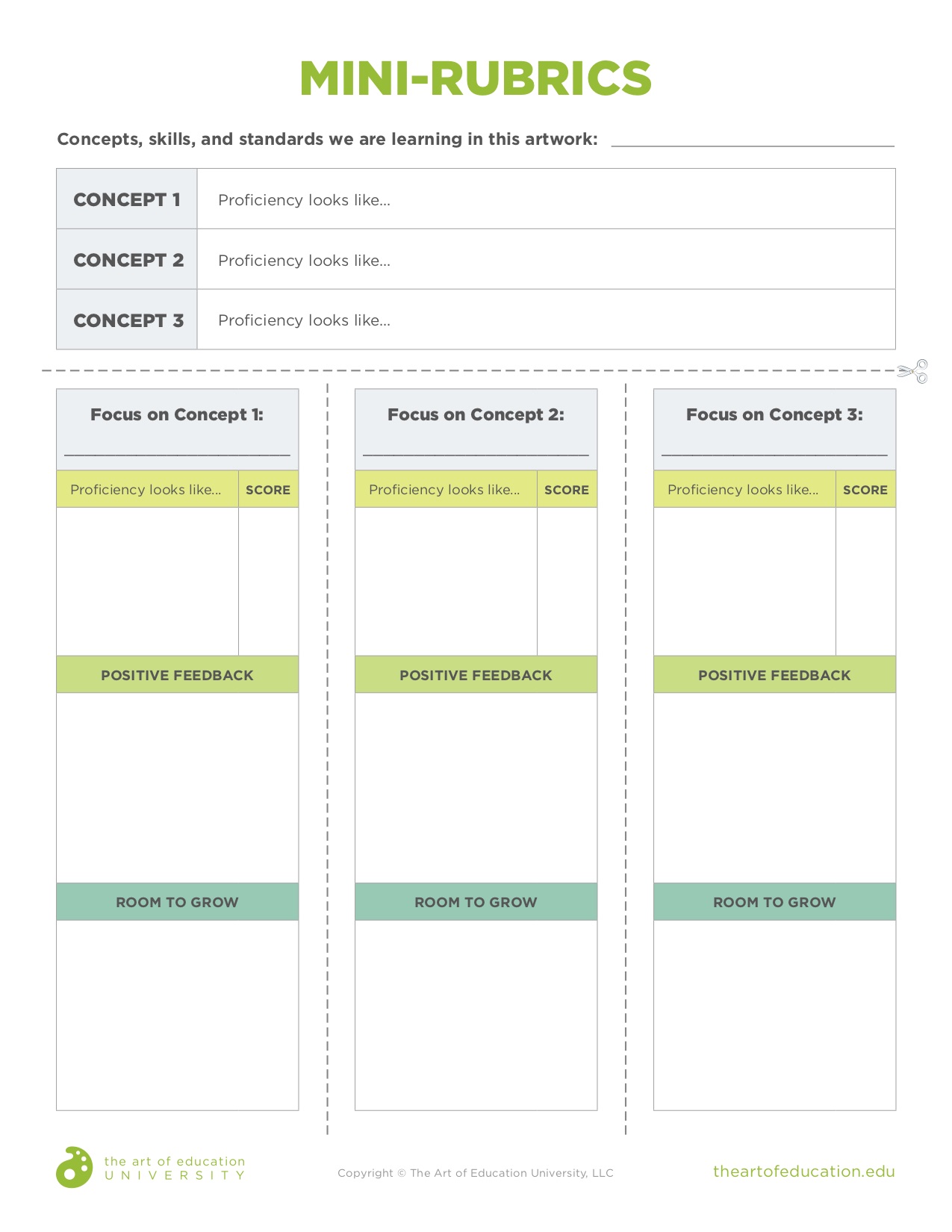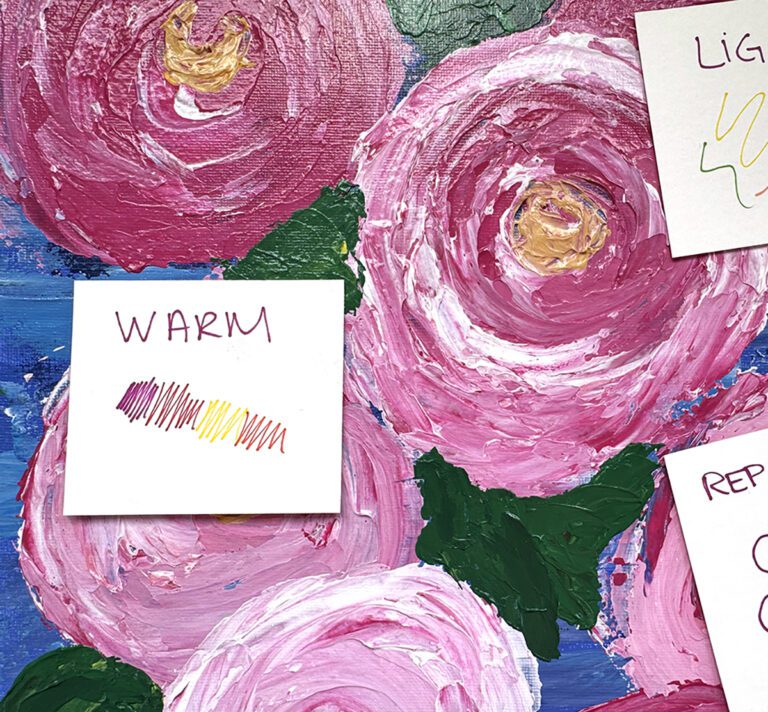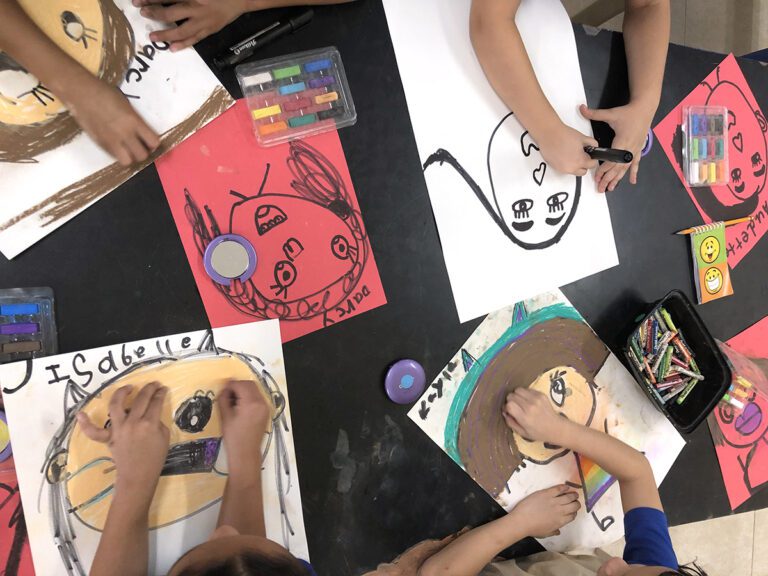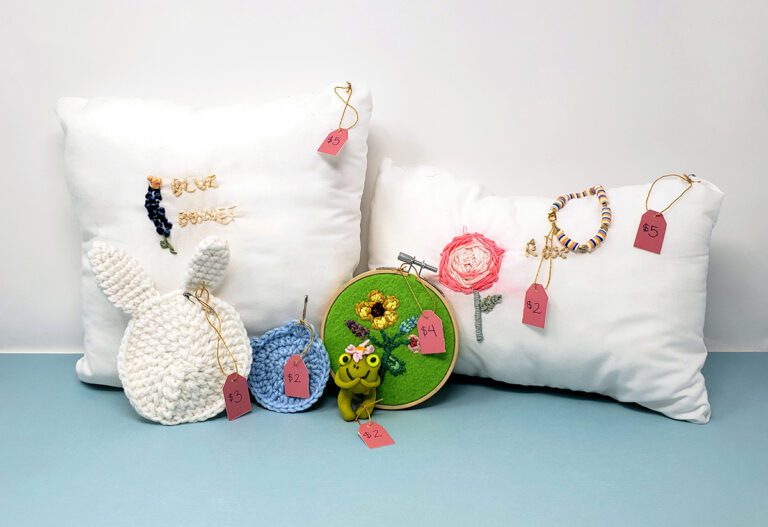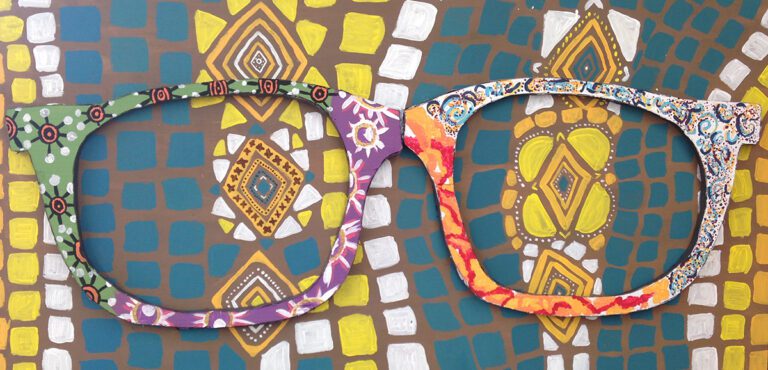Grading student artwork is beyond challenging. As art teachers, we constantly grapple with assigning a letter grade to our students’ self-expression. How do you assess student artwork without deflating their self-confidence or squashing their creative vibe? If you’re asking this, then it’s time to toss out your traditional grading for more authentic forms of assessment.
The Grading Conundrum
Our traditional school system is such that we, as art teachers, label our student’s efforts like every other subject. However, how and what we teach is drastically different from other content areas. Expecting artwork to be graded and assessed in the same manner is simply not appropriate. We think of standardization as a way to create fairness; our grading systems are set up to do just this.
Do you remember when an “A” actually meant you were exceptional? Unfortunately, our obsession with standardization and grades has created the expectation that an “A” is what we must receive to feel worthy. A “C” no longer means adequate or average. Instead, a “C” makes our students feel inadequate, causing more stress and anxiety. Unfortunately, the system supports competition and comparison through an undefined letter instead of encouraging authentic learning.
5 Tips for Better Art Assessments
So what can be done?
First, we must shift our mindset from grading to assessment and debunk some myths. Assessments are not punitive but rather are created to engage and encourage students in the learning process. An effective assessment tool provides feedback to help students move forward with their learning. The goal is for all students to master the essential skills you define in your course.
4 Assessment Myths
Myth 1: A letter grade is the only way for students and parents to know their progress.
Because letters or numbers are the systems we all know, students and parents expect this as the only way to give progress feedback. This is absolutely not true. As a parent, I definitely have no idea what my child has done to earn an “A” other than I don’t have to worry or even pay attention because “they are doing fine.” The best way for students and parents to understand their progress and what they are learning is through feedback and evidence.
Myth 2: Points are the only way to keep grades fair.
Have you ever made the most mathematically perfect rubric, only to feel like something isn’t quite right? A student who receives a “C” on that rubric really is making some incredible and imaginative artwork, while the student who you just awarded an “A” was simply following the instructions with overall subpar work. The first thing to ask is whether you are assessing skills you value in your lesson.
Myth 3: Our district or school expects a grade.
Okay, so this isn’t actually a myth, but there are definitely ways around giving grades. One way is through advocacy. This starts with your administration for approval, then parents, and of course, students. To shift the mindset of grades to authentic assessment, you need to be explicit and model this both in and out of the classroom.
Myth 4: You can’t grade the process; the end artwork is the only way to assess.
Of course, you can assess the process! That’s what formative assessment is all about; checking for understanding. If we don’t assess how our students are getting to their end product, we are not supporting their learning. Just as you shift your mindset from grading to assessment, so will you need to rethink how you assess and support the process as much as (or more than) the end product.
How to Ditch Grades for Authentic Assessment
There are a ton of different ways to assess art authentically. Rubrics are a great way to give some quick and thorough feedback. Check out the article, How to Write an Effective Rubric, to start formatting your rubric. First, decide on your key concepts or learning objectives. Then, decide on your assessment qualifiers. Standards-Based Grading language is a great way to differentiate the levels of expectations. Students can start connecting their actual progress to their feedback instead of a letter grade. Then, provide specific examples of what each category looks like. Finally, provide a space to give students additional feedback. When your rubric is thorough (but not overwhelmingly wordy), your additional feedback will be more pointed toward student needs.
1. Break up your final rubrics into mini-assessments.
Help students with quick formative assessment by breaking up your larger rubric into one concept at a time. You can focus on one concept with the whole class or provide a mini-rubric depending on students’ needs.
For example, students are working on a large artwork that will take about three weeks to complete. The essential skills you will ultimately assess will be composition, emphasis, colored pencil technique, and visual storytelling. As students develop their work, they might first be working with composition as they lay out their ideas. You can use that section of the rubric to support students before it’s too late. Then, a few days later, as students work on their colored pencil technique, you can shift to that portion of the rubric. This allows you to review with the whole class as you move through the creating process while also individualizing feedback along the way.
Download this Mini-Rubric Template
In the other scenario, you might find a student is consistently struggling with composition but really has their colored pencil technique down pat. Continually including composition feedback through your mini-rubric will provide that student’s necessary intervention. You can support another student in their visual storytelling with your other mini-rubric.
2. Identify key concepts and provide room for self-expression.
Choice allows for authentic expression. Assess key concepts while also celebrating the unique ways in which students interpret their ideas. Instead of assessing everything a student does, choose your top three to really focus on developing. Remember, your key concept might be “shading,” but it could also be something like “risk-taking.”
3. Make your rubrics specific.
If you’re spending hours and hours labeling artwork with a grade, then you probably don’t have an effective rubric. Make sure each category of your rubric gives specifics of what each category should look like. The more specific you are in your rubric, the fewer questions students will have about what they did wrong or what to fix.
4. Focus on the Feedback Loop.
Rubrics are great because you can provide fast feedback to students throughout their creating process. The more verbal and visual feedback you can provide, the more students will learn. A copy and paste list of common statements can make giving feedback a snap. Make sure to add some personal examples to help students target areas to fix.
5. Look for Evidence of Learning.
Authentic assessment doesn’t have to be so formal. You can also see and record evidence of learning and growth throughout your daily practice. Students are having critiques, discussing ideas, and refining their work.
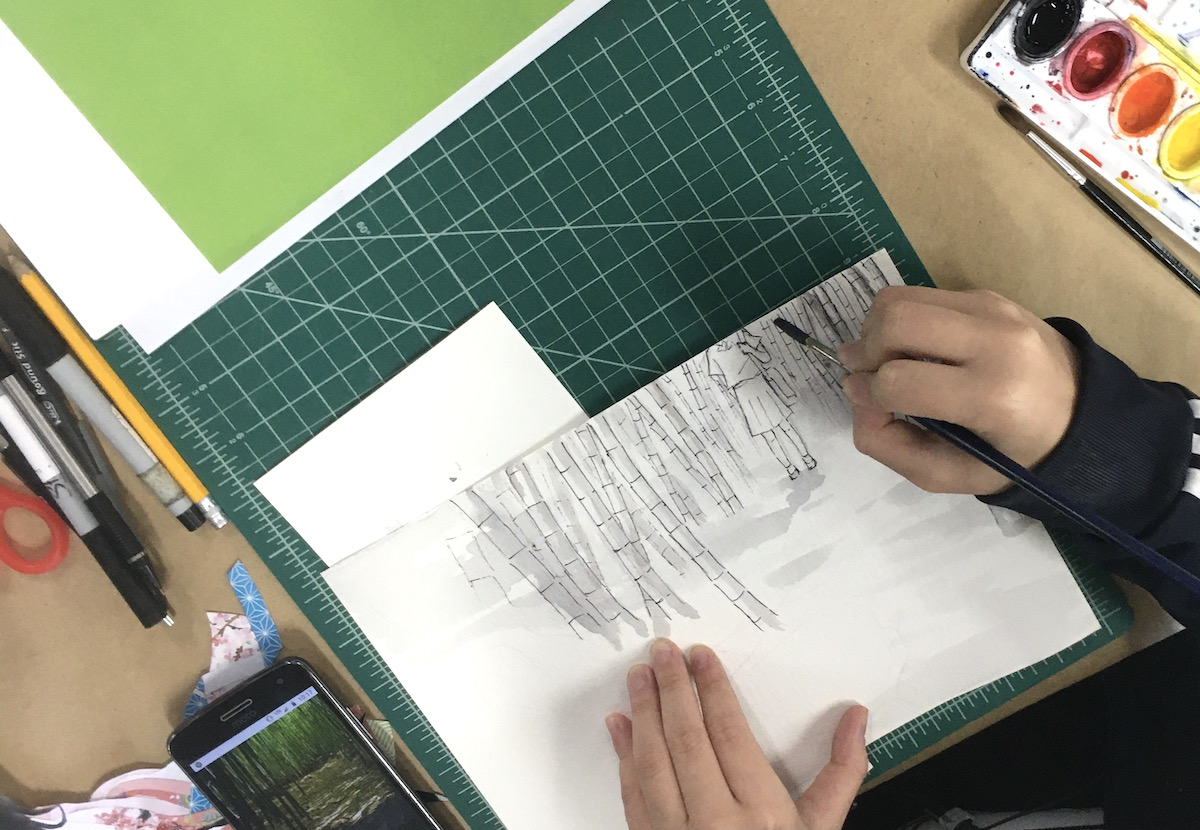
The creative process is full of assessment opportunities. Students are practicing their research and planning skills every time they start an artwork. They are refining their problem-solving skills as they troubleshoot a new creation. Peer critiques or informal studio conversations give the nudges students need to be successful. Even these daily observations will play a big role in your full assessment of a student’s learning and growth over the course of a semester.
Growth portfolios are a great way to take the pressure off of you. Let your students document, explain how and what they have learned, and identify their strengths and areas for improvement. Assessing these shifts the focus from punitive, high-pressure assignments to looking at a student’s achievements through a holistic lens.
As art teachers, we have the opportunity to empower our students with feedback rather than assigning a letter to their achievements. Shifting away from grades may take some time, and you will inevitably run into bumps along the way. As you make small changes to your mindset, you will start to see huge shifts in how your students engage with their own learning process.
How do you authentically assess your students’ learning?
How do you give feedback to help students grow?
How do you keep track of students’ daily progress?
Magazine articles and podcasts are opinions of professional education contributors and do not necessarily represent the position of the Art of Education University (AOEU) or its academic offerings. Contributors use terms in the way they are most often talked about in the scope of their educational experiences.
